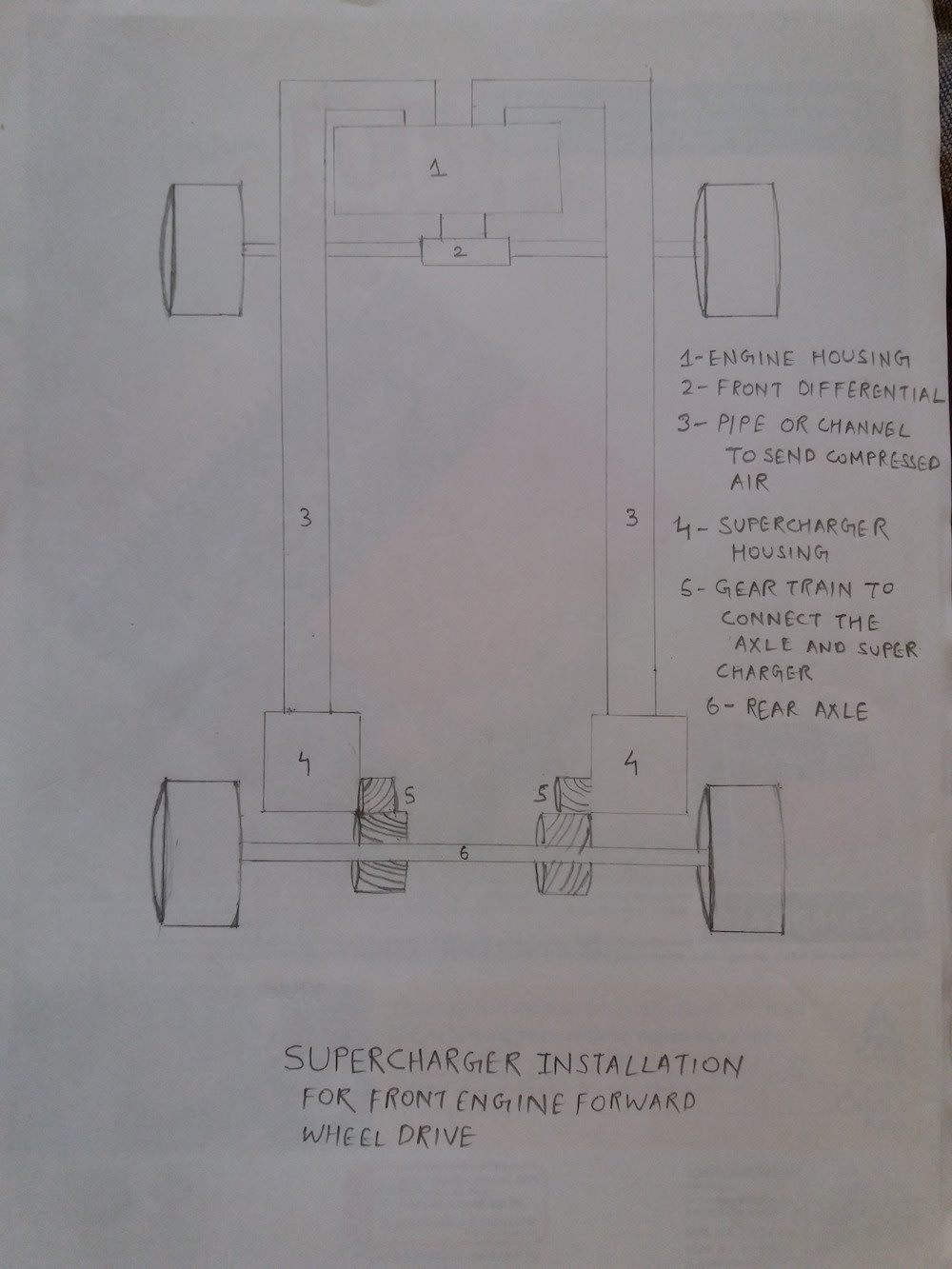A conventional supercharger is installed near the engine either above the cylinder block or in front of the engine. One of the problems of the installation of a supercharger at such a place is that as the engine gets heated to high temperature, the supercharger also gets overheated. As a result of which the supercharger has to be cooled regularly along with the engine while the vehicle is in motion.
A solution to this problem can be to harness the kinetic energy of the wheels while the vehicle is in motion. As we know the supercharger runs when it is set in motion by flywheel via a belt drive or gear train. This solution needs the supercharger to be installed near the wheels instead of the engine. In this case the superchargers will run when it will be set in motion by an axle which connects the two wheels either front or rear. Here the supercharger will be connected to an axle via a gear train instead of a belt drive. The gear ratio of the gear train used to connect the axle and the supercharger should be low. A pipe or a channel can be connected from the supercharger to intake manifold to transport compressed air from the supercharger to the engine. The supercharger will receive the air from the air surrounding the wheels and nearby components. As many as four superchargers can be installed in the cars. Hence the maximum number of supercharger in a vehicle would be equal to the number of wheels in the vehicle. However it would be feasible to have that many superchargers, so that the area around the intake manifold is not crowded and installation is an easy process. The choice of wheels for installing the supercharger near it would depend on the packaging of the vehicle (i.e. is it a front engine forward wheel drive, front engine rear wheel drive etc). For example- In a front engine front wheel drive car the engine and the differential will be located in and around the front wheels so it would be convenient to place the supercharger near the rear wheels. Although the torque provided to supercharger would be less in this case when compared to a supercharger run by a flywheel but it would be compensated by use of at least two superchargers. Since the superchargers would be located far away from the engines, it would not be subjected to very high temperatures or large amount of heat.
Like this entry?
-
About the Entrant
- Name:Abhishek Sunny Pingua
- Type of entry:individual
- Patent status:none

